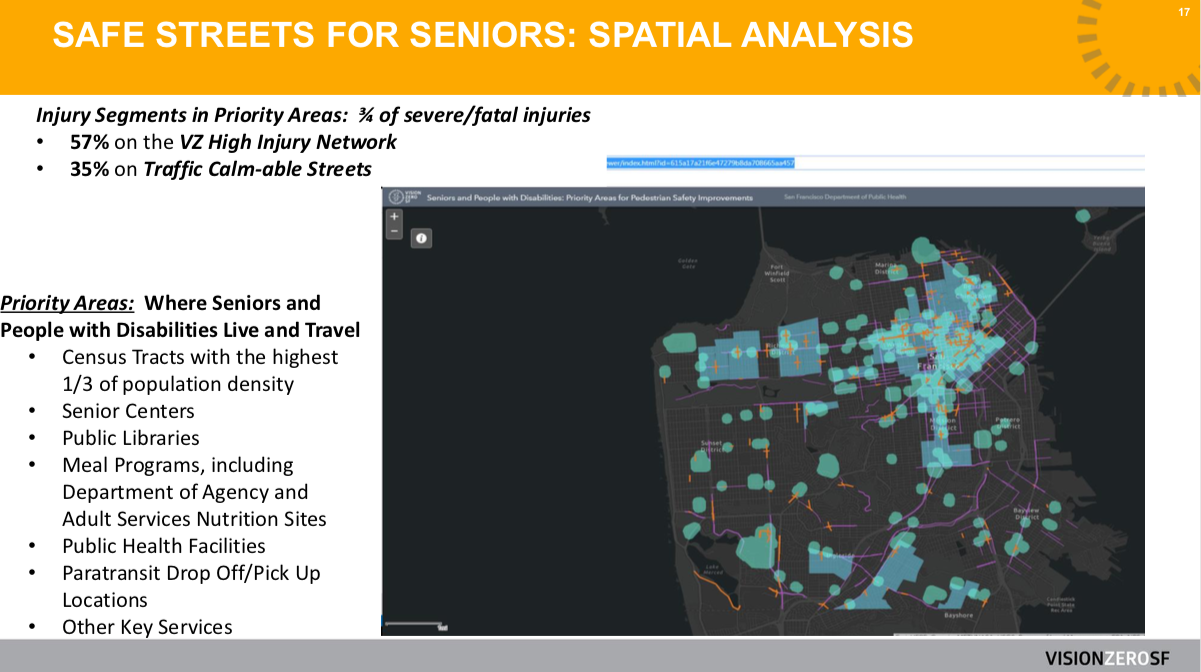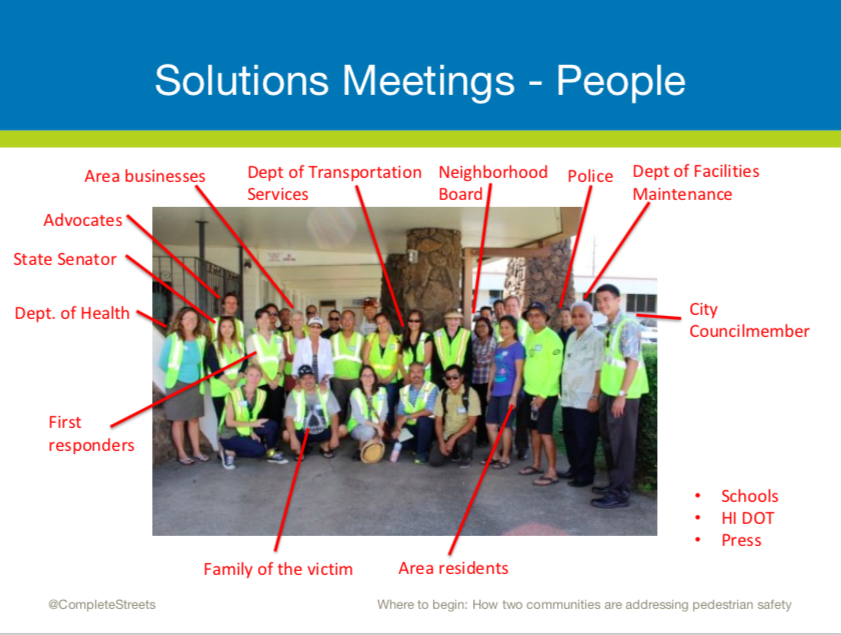
News
By Natasha Riveron, March 20, 2019
This March, we hosted “Where to begin: How two communities are addressing pedestrian safety," the latest installment in our monthly webinar series Implementation & Equity 201: The Path Forward to Complete Streets. A recording of the webinar is now available. You can also read the brief recap below.
A discussion recap
Heather Zaccaro, program manager with the National Complete Streets Coalition, gave context on the national pedestrian safety crisis by reviewing findings from our recent report Dangerous by Design 2019. Across the country, we are seeing higher numbers of people killed while walking than in the last three decades. There are also clear trends around which types of roads are most dangerous and which groups are disproportionately impacted (older adults, people of color, and people walking in low-income communities). However, there is good news: we know how to address this crisis and there are many communities across the country taking steps to protect the lives of people walking on their streets.
San Francisco is one such city. Megan Wier from the San Francisco Department of Public Health (DPH) and co-chair of the San Francisco Citywide Vision Zero Task Force picked up explaining how San Francisco is acting to increase pedestrian safety. She began by sharing an overview of the city’s Vision Zero initiative and how they are incorporating equity as part of everything they do.
“We cannot realize vision zero if we don't focus on the people who are most vulnerable in our transportation system.”
To work toward their vision of zero pedestrian deaths, the Vision Zero Task Force is leveraging community engagement and data. She shared multiple anecdotes, including the Safe Streets for Seniors program that was created in response to data showing seniors make up about 15 percent of San Francisco’s residents and about half of the city’s pedestrian fatalities.
DPH engaged seniors and senior service providers by doing outreach and multilingual presentations in order to inform the Vision Zero movement. They also provided funding to community based organizations, particularly in high risk areas of the city to do deeper education outreach. Using data and spatial analysis, the city identified areas for where seniors and people with disabilities live and travel; those areas matched where there were more pedestrian injuries.

Through the community engagement and the DPH grants, community advocates were able to persuade the San Francisco Municipal Transportation Authority to change their policy around crossing times city-wide. The spatial analysis also helped decide where to target traffic calming efforts and an ad campaign encouraging drivers to slow down.
Megan wrapped up by sharing her thoughts on how to begin improving pedestrian safety.
Great reflections from Megan Wier (@SFDPH) on where to start on #pedestrian safety. @Visionzeronet @VisionZeroSF pic.twitter.com/K8rwbxMiu7
— Complete Streets (@completestreets) March 13, 2019
Next, we welcomed Daniel Alexander, co-executive director at the Hawaii Bicycle League. He started off by noting how Hawaii has demonstrated many of the same trends that we saw across the country in Dangerous by Design 2019. One step the League has taken to influence policy and help communities respond to tragedies without normalizing them is their new Solutions Meeting program.
Solutions Meetings humanize traffic violence by bringing a wide range of stakeholders to the site of a traffic fatality, including engineers, police, and even the victims or family members. Daniel walked us through the details of a specific pedestrian fatality that was the subject of a solutions meeting and the key factors that made it successful.
"When a traffic engineer hears from the victim's sister how dangerous the crosswalk is, it really drives the point home" Daniel Alexander from @HBLRideAloha explaining Solutions Meetings. pic.twitter.com/gIDPnfOQsD
— Complete Streets (@completestreets) March 13, 2019

These thoughtfully facilitated meetings humanize fatalities on our streets and pave the way for short and long-term solutions. The program, originally the idea of Seattle Greenways, encourages a hyper-context-sensitive look at what causes unsafe streets, what we can do to fix them, and what is at stake.
Related News

© 2026 Smart Growth America. All rights reserved
Site By3Lane Marketing










